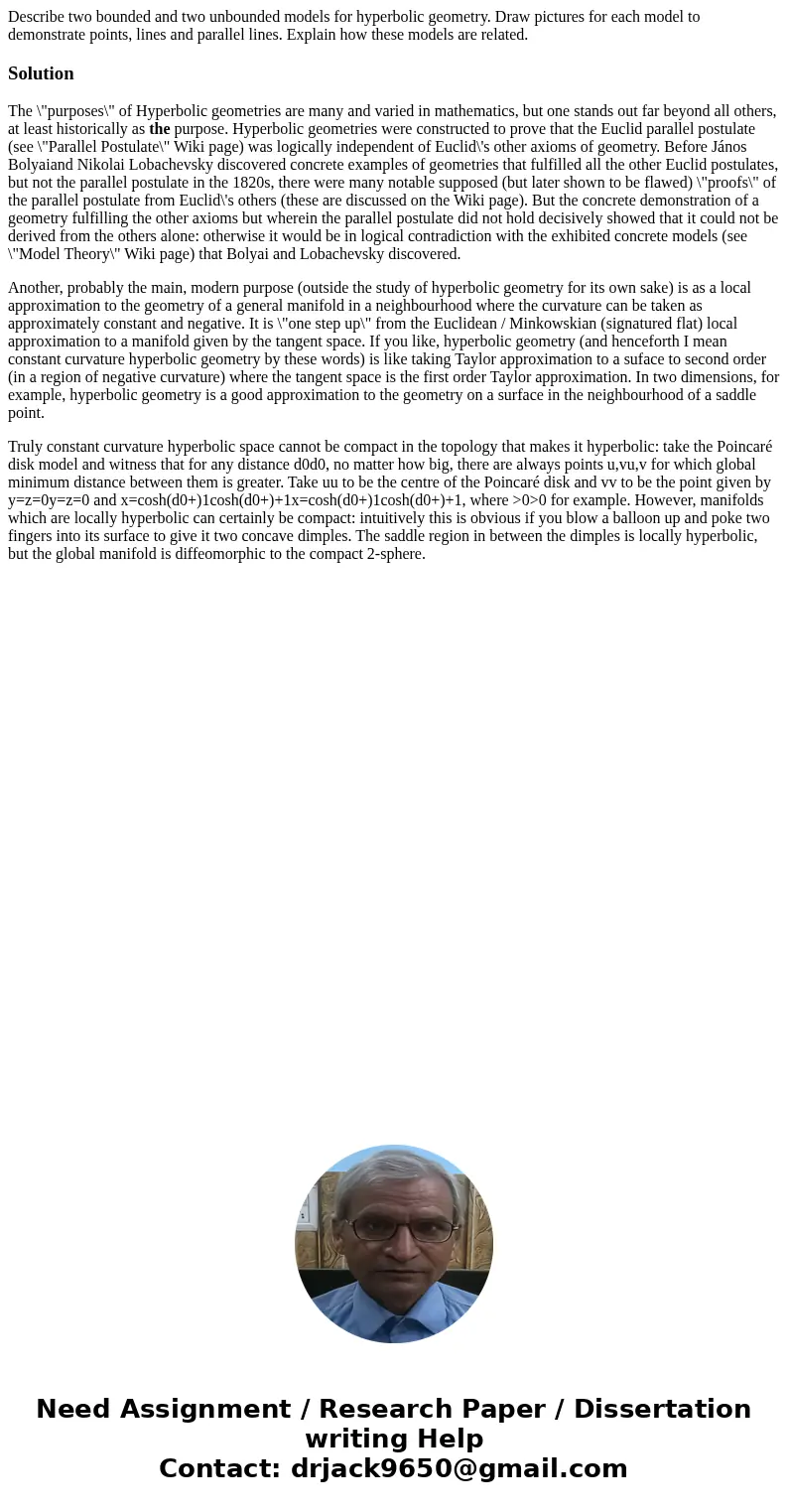Describe two bounded and two unbounded models for hyperbolic
Describe two bounded and two unbounded models for hyperbolic geometry. Draw pictures for each model to demonstrate points, lines and parallel lines. Explain how these models are related.
Solution
The \"purposes\" of Hyperbolic geometries are many and varied in mathematics, but one stands out far beyond all others, at least historically as the purpose. Hyperbolic geometries were constructed to prove that the Euclid parallel postulate (see \"Parallel Postulate\" Wiki page) was logically independent of Euclid\'s other axioms of geometry. Before János Bolyaiand Nikolai Lobachevsky discovered concrete examples of geometries that fulfilled all the other Euclid postulates, but not the parallel postulate in the 1820s, there were many notable supposed (but later shown to be flawed) \"proofs\" of the parallel postulate from Euclid\'s others (these are discussed on the Wiki page). But the concrete demonstration of a geometry fulfilling the other axioms but wherein the parallel postulate did not hold decisively showed that it could not be derived from the others alone: otherwise it would be in logical contradiction with the exhibited concrete models (see \"Model Theory\" Wiki page) that Bolyai and Lobachevsky discovered.
Another, probably the main, modern purpose (outside the study of hyperbolic geometry for its own sake) is as a local approximation to the geometry of a general manifold in a neighbourhood where the curvature can be taken as approximately constant and negative. It is \"one step up\" from the Euclidean / Minkowskian (signatured flat) local approximation to a manifold given by the tangent space. If you like, hyperbolic geometry (and henceforth I mean constant curvature hyperbolic geometry by these words) is like taking Taylor approximation to a suface to second order (in a region of negative curvature) where the tangent space is the first order Taylor approximation. In two dimensions, for example, hyperbolic geometry is a good approximation to the geometry on a surface in the neighbourhood of a saddle point.
Truly constant curvature hyperbolic space cannot be compact in the topology that makes it hyperbolic: take the Poincaré disk model and witness that for any distance d0d0, no matter how big, there are always points u,vu,v for which global minimum distance between them is greater. Take uu to be the centre of the Poincaré disk and vv to be the point given by y=z=0y=z=0 and x=cosh(d0+)1cosh(d0+)+1x=cosh(d0+)1cosh(d0+)+1, where >0>0 for example. However, manifolds which are locally hyperbolic can certainly be compact: intuitively this is obvious if you blow a balloon up and poke two fingers into its surface to give it two concave dimples. The saddle region in between the dimples is locally hyperbolic, but the global manifold is diffeomorphic to the compact 2-sphere.

 Homework Sourse
Homework Sourse